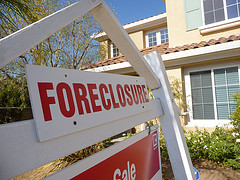some essential tips that might help you save your home.
#1 Homeowner Tip = Have an experienced mortgage attorney examine your loan documents for these potential violations.
#2 Homeowner Tip The homeowner needs a complete written life of loan history to see all the bogus charges and fees included in their mortgage balance. Also, the homeowner should make sure that any inflated appraisal and/or loss of property value is calculated into the workout.
Red Flags and Things to Look Out For in Your Loan:
Start by comparing the loan you got with the one you thought you were getting. Are the terms the same? That is, is your Annual Percentage Rate (“APR”) the same as the one you were quoted? Are your total monthly payments the same as you were told they would be? Is there a prepayment penalty, and if so, were you told about this prepayment penalty?
If you have refinanced your primary residence, that is, the home your currently live in, then the first thing you should look at is the “notice of Right to Cancel” which is also called the Three Day Right of Rescission. You usually has three days after signing loan documents to change your mind and cancel the loan.
The borrower must be told of this right in writing.
If the creditor fails to properly provide notice of this right to cancel, the right of rescission may be extended for up to three years.
When the right is extended for three years you can rescind the loan at any time before three years, meaning that the loan is treated as if it never existed. Essentially, you become entitled to all profits made by the creditor as a result of this loan. This means that the creditor must refund all interest paid, all closing fees, all broker fees, and even pay for your attorney fees. As you can imagine, this amount can be quite significant.
The extended right of rescission is a powerful tool to help borrowers who have been victims of predatory lending, and helping our clients exercise this right is often the first step in holding a creditor responsible for illegal behavior.
If it is determined that no laws have been violated on your mortgage, then it’s time to approach your lender for a possible loan workout or loan modification.
[poll id=”null”]
The factors they will look at are:
1. Nature of Hardship Causing Your Mortgage Problems
2. Ability to pay
3. Amount Owed
4. Equity in the property
5. Future financial situation
6. What is better for them. To foreclose or pursue a loan workout with you and or modify your loan. Meaning which approach will best benefit the lender in the long run.
A loan workout or loan modification generally occurs where the parties to a problem loan mutually agree to workout the problem by creating new and better loan terms. The hope is that the new loan will enable to the borrower to meet their obligations.
When applying for a loan modification, make a game plan on how exactly you are going to approach them. These people are trained in minimizing loss for their company and they get paid to by getting the most amount of money out of you as possible or declare that your case is un workable and foreclose on you. That is how they mitigate loss. If you understand this, then you’ll know that you have to approach them and all conversations very carefully.
Everything can and will be used against you.
Your lender has two platoons of employees who talk with delinquent borrowers. The first is the collections department, which consists of people who try to pry money out of you and get you current on the payments. The second group consists of the loss mitigation specialists. These departments go by different names, depending on the servicer, including foreclosure prevention, loan resolution and delinquency customer service. We’ll use the most common name for the department: loss mitigation, or loss mit. It can be difficult to get through to the loss mitigation department if collection agents are discouraged from transferring calls. This is one of the benefits of having a helper, such as an attorney or a housing counselor. The first will intimidate bill collectors and the second might have contacts within the loss mitigation department.
The trick with any bank and getting a work out done is learning to navigate their phone system so as to increase your chances of getting a live person. Over the years I’ve learned some tricks that help, sometimes you hear options that you know will lead to a person like when it says “to speak to a representative press ___” but sometimes they don’t give you these options. So, you have to think, what options WOULD get a live person. For example often anything that involves new clients signing up will get a live representative…because they always want new business. You have to be a little savvy though; you can’t just tell the sales guy you called them so you could get a warm body to answer the phone!
Once you get a live person, you want to be working your way up to a decision maker. This is sometimes harder to do for a homeowner than a 3rd party. Often with the homeowner they get stonewalled at the first level, and sadly the first tier in Loss Mitigation is really a glorified collections department. They are paid hourly employee’s who have very little if not zero motivation to go the extra mile and help you get some needed comfort and relief while resolving your problem. Often they just compound the problem by being rude and demanding, telling people things like “just pay your bills”. So it’s essential that you get beyond these people and to a specialist.
Sometimes to get to this point you have to put up with the hourly employee’s through a process of filling out their forms and information. Providing them with items such as pay stubs, tax returns and a whole host of financial information. Once everything is provided, then some lenders will assign the file to someone higher up in the loss mitigation department.
The MOST crucial element to this whole process is your Budget and if you have done your due diligence, you’ll be ready . They will ask you for a detailed list of your monthly expenses. If it’s too tight, you may not get approved, if you have too much extra income you are going to have an outrageous payment plan. Don’t agree to it!
The 2nd MOST important thing you can do is DO NOT SPEND YOUR HOUSE PAYMENTS. Often people stop making their payment because they are falling behind on other bills, or they can’t quite make the whole house payment. Over the years more often than not, the people I met with still have an income coming in each month, they just can’t meet all their obligations, so while the house is falling behind they take advantage of the fact that they aren’t paying the house payment in order to catch up on other debts. THIS IS NOT WISE AT ALL. Sock away as much of that money each month as you can. Its crucial, here’s why;
If you don’t pay your mortgage for 3-4 months and your lender decides to negotiate a repayment plan or a loan modification, then they will want what is called “good faith” money for you to come to the table with. Typically this is from 30-75% and sometimes 100% of what you owe in delinquent fees and attorney fees. Often I speak with homeowners who spend all their money and have nothing to work with. If that is the case, then don’t expect them to work with you or you better have a REAAAALLLY good explanation and proof as to why you have no money to bring to the table.
 A hardship letter is a letter written to your bank or mortgage company telling them why you can no longer afford to make the payments on your home. This letter describes your hardships and specifically what has happened that caused you to fall behind.
A hardship letter is a letter written to your bank or mortgage company telling them why you can no longer afford to make the payments on your home. This letter describes your hardships and specifically what has happened that caused you to fall behind.

![Reblog this post [with Zemanta]](http://img.zemanta.com/reblog_e.png?x-id=da26d387-62eb-4ac0-ad41-f4721c6fa94a)

 Overview
Overview![Reblog this post [with Zemanta]](http://img.zemanta.com/reblog_e.png?x-id=2633b3dc-26b9-4212-a353-757e3ac98763)

 Overview
Overview![Reblog this post [with Zemanta]](http://img.zemanta.com/reblog_e.png?x-id=d2781a90-d5db-47c8-947e-0e1da18bcccd)

 Overview
Overview![Reblog this post [with Zemanta]](http://img.zemanta.com/reblog_e.png?x-id=736fa50c-ff0f-4bab-9813-dada817428ed)

 Overview
Overview![Reblog this post [with Zemanta]](http://img.zemanta.com/reblog_e.png?x-id=3c26b71d-8446-49f9-9d92-8c134220b708)


![Reblog this post [with Zemanta]](http://img.zemanta.com/reblog_e.png?x-id=dd03937c-f45e-4531-b72d-80b30a6fe215)

![Reblog this post [with Zemanta]](http://img.zemanta.com/reblog_e.png?x-id=a9b21c1b-8174-4caa-91a0-4985ba709bf2)
